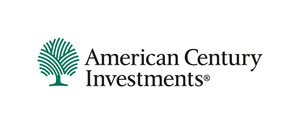KANSAS CITY, Mo., April 10, 2017 /PRNewswire/ -- Today American Century Investments announced the further buildout of its suite of liquid alternative investment strategies. AC Alternatives® Disciplined Long Short Fund is now available to clients and investors who are seeking equities with potentially lower volatility.
"AC Alternatives Disciplined Long Short is a welcome addition because it's another way to help clients strive to mitigate risk in their portfolios," said Cleo Chang, senior vice president and head of alternative investments for American Century Investments. "We also believe long short strategies can provide important diversification with the potential for more consistent returns over a full market cycle."
The fund is the sixth offering in the AC Alternatives lineup, a brand launched by American Century Investments in 2015.
The fund, formerly known as Disciplined Growth Plus and launched in 2011, has been redesigned to be a long short equity product with a variable net exposure to equities that will typically range from 30 percent to 70 percent. It will continue to follow the same investment philosophy with modifications around the amount of the fund that can be long or short, based on a dynamic, market-exposure model. Exposure decisions incorporate short-term market forecast models that have been employed within the firm for decades, enhanced with longer-term market forecasting tools. Previously, Disciplined Growth Plus was a 130/30 fund with 100 percent net exposure to equities. "We revamped the fund to adapt to changing market dynamics and client preferences," said Chang.
The fund is available in Investor (ACDJX), Institutional (ACDKX), A (ACDQX), C (ACDHX) and R (ACDWX) share classes.
AC Alternatives Disciplined Long Short is managed by Chief Investment Officer, Multi-Asset Strategies & Disciplined Equity Scott Wittman, CFA, CAIA, and Vice President and Portfolio Manager Yulin Long, Ph.D., CFA.
Wittman, who is a senior vice president and senior portfolio manager, joined the firm in 2009. He oversees the portfolio management teams responsible for the company's disciplined equity and multi-asset portfolios. He serves as a member of the Investment Oversight Committee, Products & Markets Committee and the Investment Management Senior Leadership Team. Prior to joining American Century, he was managing director, Quantitative and Alternative Investments for Munder Capital Management. He also served as president and chief investment officer for Vantage Investment Advisors. Other investment experience includes roles with TSA Capital Management and Mellon Bank. Wittman, who has worked in the financial industry since 1982, holds a bachelor's degree in finance and an M.B.A. in finance from Indiana University. He is a CFA charterholder and a Chartered Alternative Investment Analyst.
Long joined American Century in 2005. Previously, she was an analyst for the firm. Prior to that, she worked for Cornerstone Research, conducting financial and accounting analysis. She earned a Ph.D. in accounting from Stanford University, a master's degree in accounting from Hong Kong University of Science and Technology and a bachelor's degree in finance from Beijing University. She is a CFA charterholder and a member of the CFA Institute.
American Century Investments is a leading global asset manager focused on delivering investment results and building long-term client relationships while supporting research that can improve human health and save lives. Founded in 1958, American Century Investments' 1,300 employees serve investment professionals, institutions, corporations and individual investors from offices in New York; London; Hong Kong; Mountain View, Calif.; and Kansas City, Mo. Jonathan S. Thomas is president and chief executive officer, and Victor Zhang and David MacEwen serve as co-chief investment officers. Delivering investment results to clients enables American Century Investments to distribute over 40 percent of its dividends to the Stowers Institute for Medical Research, a 500-person, non-profit basic biomedical research organization. The Institute owns more than 40 percent of American Century Investments and has received dividend payments totaling nearly $1.3 billion since 2000. For more information about American Century Investments, visit www.americancentury.com.
You should consider the fund's investment objectives, risks, charges and expenses carefully before you invest. The fund's prospectus or summary prospectus, which can be obtained by visiting americancentury.com, contains this and other information about the fund, and should be read carefully before investing.
Alternative mutual funds that hold a variety of non-traditional investments also often employ more complex trading strategies than traditional mutual funds. Each of these different alternative asset classes and investment strategies have unique risks making them more suitable for investors with an above average tolerance for risk.
Fund(s) shown may take short positions. A short position arises when the fund sells stock that it does not own but was borrowed in anticipation that the market price of the stock will decline. If the market price declines, the fund can replace the borrowed stock at a lower price and capture the value represented by the difference between the higher sale price and the lower replacement price. Conversely, if the price of the stock goes up after the fund borrows the stock, the fund will lose money because it will have to pay more to replace the borrowed stock than it received when it sold the stock short. Any loss will be increased by the amount of compensation, interest or dividends, and transaction costs the fund must pay to the lender of the borrowed security. In addition, because the fund's loss on a short sale stems from increases in the value of the stock sold short, the extent of such loss, like the price of the stock sold short, is theoretically unlimited. By contrast, a fund's loss on a long position arises from decreases in the value of the stock and therefore is limited by the fact that a stock's value cannot drop below zero. In addition, the fund may not be able to close out a short position at a particular time or price advantageous to the fund and there is some risk the lender of the stock sold short will terminate the loan at an inopportune time.
A long position is the opposite of a short position. A long position is the buying of a security such as a stock with the expectation that it rise in value.
©2017 American Century Proprietary Holdings, Inc. All Rights Reserved.
American Century Investment Services, Inc., Distributor.
SOURCE American Century Investments
Related Links
WANT YOUR COMPANY'S NEWS FEATURED ON PRNEWSWIRE.COM?
Newsrooms &
Influencers
Digital Media
Outlets
Journalists
Opted In




Share this article